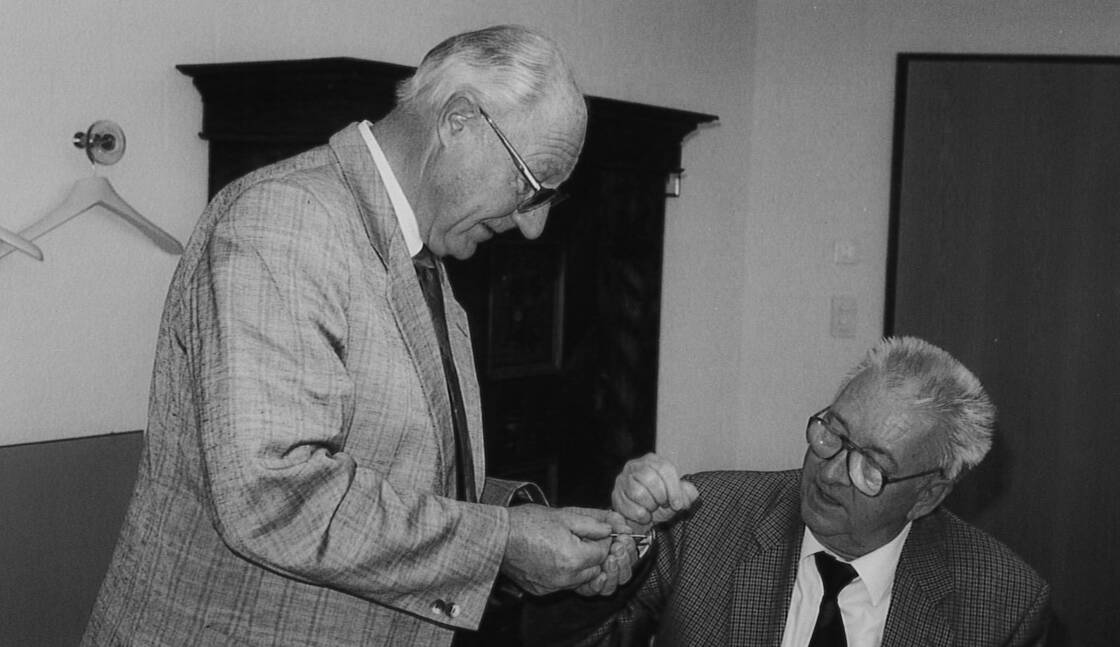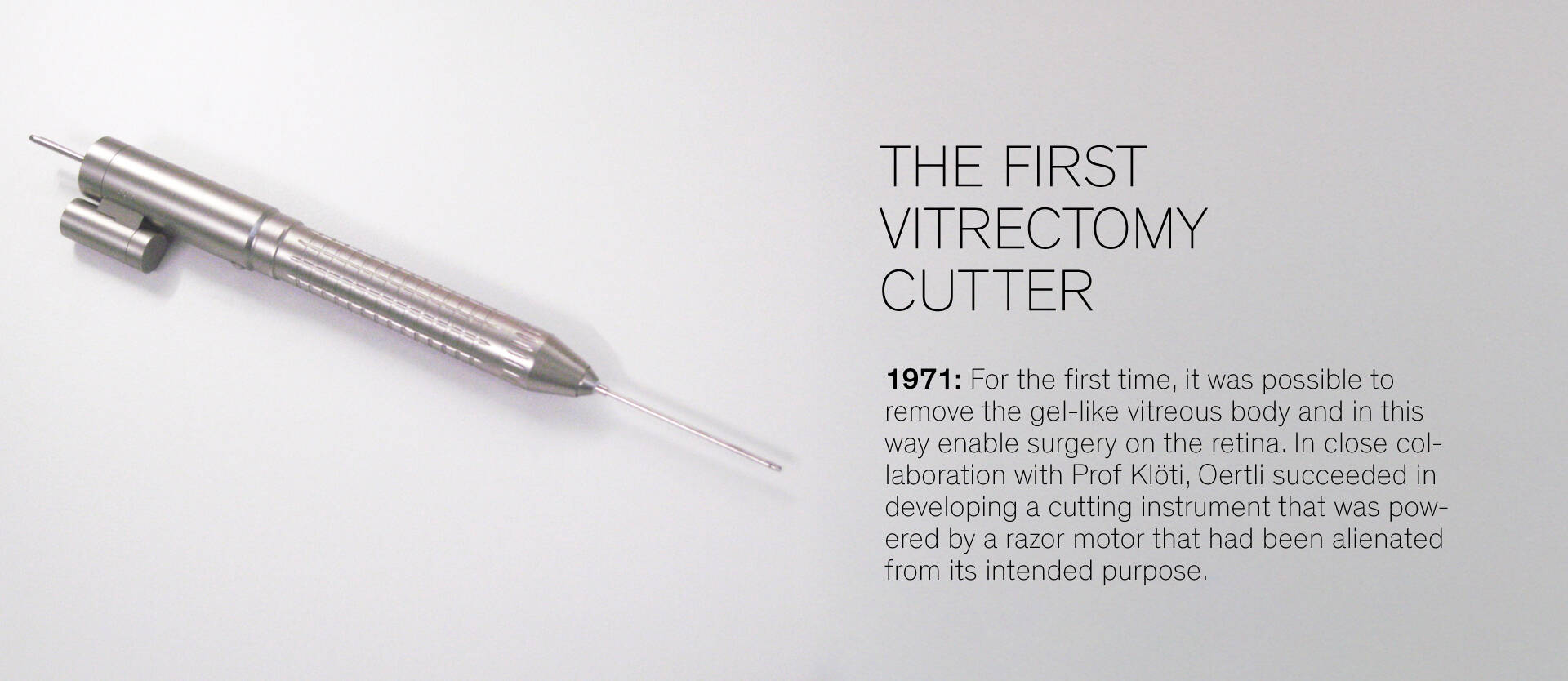
History of Vitrectomy: Contributions by Machemer and Klöti
Published: 06/02/2025, Reading time: 4 minutes
Vitrectomy is one of the most transformative advancements in modern ophthalmology. Over decades, this procedure has evolved from rudimentary methods to sophisticated techniques. This article delves into its origins, highlighting the pioneering work of Dr Robert Machemer and Prof Rudolf Klöti, as well as the technological advancements that followed.

Early Approaches to Vitreous Surgery
The first recorded vitreous surgery was performed in 1863 by Albrecht von Graefe, who used a needle to penetrate the vitreous membrane 1.
By the 1960s, various experimental techniques had emerged, but most were unsuccessful in achieving long-term results 1.
In the 1960s, Kasner introduced the "open-sky technique," involving a large limbal incision, corneal removal, and lens extraction to access the vitreous. However, this approach was fraught with complications, including corneal opacities and retinal detachment 1.
Robert Machemer: The Pioneer of Modern Vitrectomy
In the early 1970s, German-born ophthalmologist Robert Machemer developed the Vitreous Infusion Suction Cutter (VISC). This revolutionary device enabled the safe removal of vitreous humor via the pars plana, reducing intraoperative pressure fluctuations and laying the foundation for modern pars plana vitrectomy 2.
Rudolf Klöti: Innovator in Surgical Refinement
Around the same time, Swiss ophthalmologist Rudolf Klöti advanced vitrectomy technology by focusing on miniaturizing instruments and refining surgical techniques. Together with Heinz Oertli, the founder of Oertli Instrumente AG, Klöti developed the “Vitreous Stripper,” a revolutionary vitrectomy cutter that integrated aspiration, cutting, and infusion into a single instrument. This device became the gold standard in vitreous surgery, enabling safer and more precise procedures 3 4.
Heinz Oertli, who established his workshop in St. Gallen in 1955, brought decades of experience in crafting ophthalmic instruments. His early innovations, including tools for strabismus and corneal surgeries, laid the groundwork for the collaboration with Klöti. Together, they not only designed the Vitreous Stripper but also pioneered advancements such as diathermy instruments, peristaltic pumps, and light-guiding systems. These tools significantly enhanced surgical precision and efficiency, setting new standards for vitreoretinal procedures.
Dual linear pedal
Initially, only a linear pedal was available, allowing control over just one parameter at a time. In 1985, Oertli Instrumente AG introduced the dual-linear pedal, enabling independent control of two parameters eg. pump system and vitrectomy cutting rate.
Trocar system
The introduced Trocar system by Oertli in 2008, the internal sealing membrane prevents the escape of BSS, air, or oil and can be easily removed with forceps.
Klöti and Oertli’s combined efforts marked a turning point in the field, demonstrating the power of interdisciplinary collaboration between surgeons and instrument makers. Their work laid the foundation for modern micro-incision vitrectomy surgery (MIVS), highlighting how innovation and partnership can transform patient care.

Technological Evolution of Vitrectomy
The technological advancements in vitrectomy have unfolded over several stages:
-
Introduction of the 20-Gauge Technique
Early vitrectomy devices were 17-gauge in size. The introduction of 20-gauge pars plana vitrectomy standardized the approach for treating vitreoretinal diseases 2. -
Shift to Smaller Gauge Systems
Smaller ophthalmic trocars (23-, 25-, and 27-gauge) have replaced the 20-gauge system, allowing for sutureless surgery with reduced trauma and faster recovery 2. -
Improved Visualization
Innovations like wide-angle observation systems and the use of vital dyes for highlighting epiretinal membranes have significantly improved intraoperative visualization and precision 2.

The Possible Future of Vitrectomy
The future of vitrectomy holds exciting possibilities, driven by ongoing technological and scientific innovations. Future ophthalmic instruments may enabling surgeries with minimal tissue disruption and faster recovery times. Advanced imaging technologies, such as intraoperative optical coherence tomography (OCT) and 3D visualization systems, could offer unparalleled precision during procedures.
The integration of robotics and artificial intelligence (AI) may also redefine surgical practices. Robots could assist in performing ultra-precise tasks, while AI algorithms could provide real-time decision support by analyzing imaging data during surgery. Additionally, bioengineered solutions, such as artificial vitreous substitutes or new materials for ocular repair, might further expand the treatment possibilities.
Collaboration across disciplines like engineering, biotechnology, and materials science will likely accelerate these developments. As these technologies mature, they could pave the way for safer, more efficient, and even preventive approaches to vitreoretinal care.
While the specifics of these advancements remain uncertain, the trajectory of innovation in vitreoretinal surgery is clear. By building on the legacy of pioneers like Machemer and Klöti, the field continues to evolve, bringing hope to patients and setting the stage for a future where vision restoration becomes even more accessible and precise.

Phaco History
Check out our blog about the history in phacoemulsification - and more.
Robotics and AI in ophthalmology
Discover the latest innovations and get all the information you need on this topic.
Glaucoma and HFDS
HFDS shows its love for the eyes by offering a minimally invasive and gentle approach to glaucoma treatment. Check it out.
Oertli data on file
This blog post now accurately references the provided sources in the correct order, ensuring clarity and proper attribution of information. If you have further adjustments or additions, feel free to ask!
This blog was written with the support of artificial intelligence (Chat-GPT).
